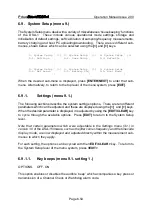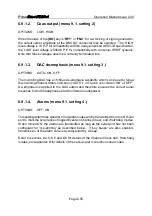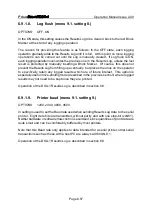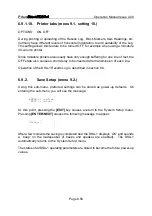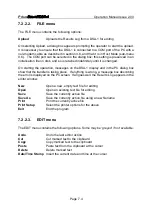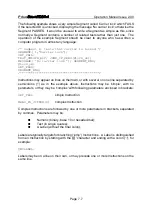
Prism
Operation Manual Issue 2.00
Page 6.60
Generator/Editor:
Generator mode: GEN1, Internal Sync Source, 48kHz
Edit Mode: TIED, Aud:Y, C-S:Y, V:Y
GEN1 Audio: Sine, -14dBFS, 1kHz, ON, 24b
GEN1 C-S: Field 1 edited to Pro, rest transparent
GEN2 Audio: fs/4 sine, ON
GEN2 C-S: Professional
Valid bit: 0, Valid
Jitter generator: PRS-H, OFF
Channel Check:
Settings: Both channels, 24b
Watchdog:
Settings: All LEDs masked
Microscope:
Settings: 0dB, 24b
Settings:
Key beeps: OFF
Coaxial O/P amplitude: LOW
DAC de-emphasis: AUTO
Alarms: OFF
Sub-menu memory: ON
Power save: ON
Live print: OFF
Log flush: OFF
Printer baud: 1200
Printer tabs: ON
6.9.4.
Ref Learn (menu 9.4.)
This feature provides a means of software-calibrating the unit against an external
reference signal, and storing the calibration so that sampling frequency accuracy
measurements may be made with respect to the reference, even after it has been
disconnected. In this state, the DSA-1 is said to have `learned' the external reference
signal.
Having entered `Ref Learn' mode, the LCD displays:
ENTER to acquire
Ref fs, or CLEAR
At the same time, the DSA-1 automatically selects whichever REF SYNC input is
receiving the reference, and determines whether it is in IEC958/AES11 or Wordclock
format. The CARRIER panel indicates the sampling rate and accuracy of the
reference. At this point, the [<] or [>] key will toggle the LCD display between the
message shown above, and a readout of the measured sampling frequency and









